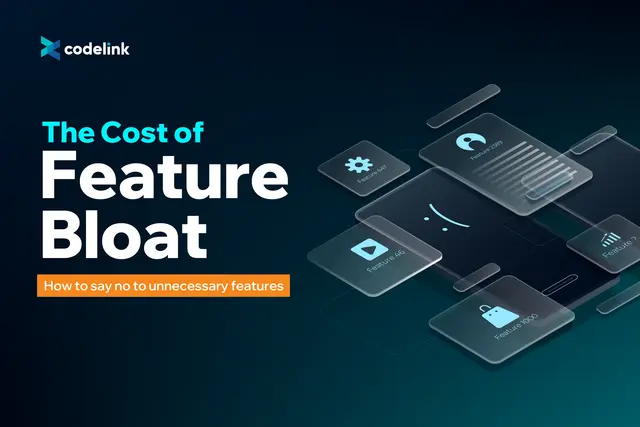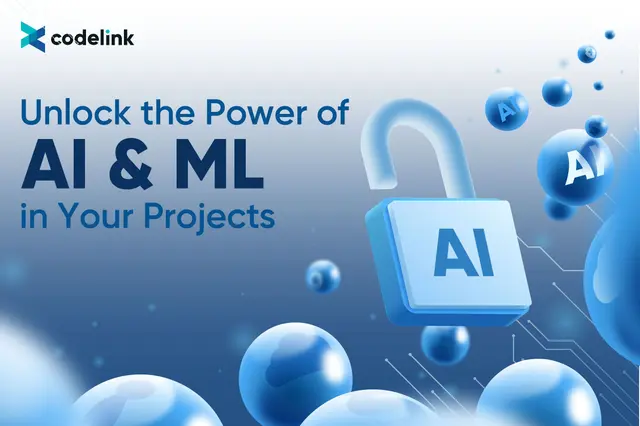Blog
How to get from Zero to Prototype in 5 Days

Are you struggling to efficiently test and create new product ideas? Is this process taking a long time? Do you wish there was a more streamlined way to turn your ideas into successful prototypes - in a fraction of the time?
Look no further than the design sprint - a process to take an idea from zero to prototype ... in just five days!
In this blog, we'll guide you through the design sprint process step-by-step, covering team structure, daily schedule, and goal-setting. We'll help you break down the process into specific steps, including mapping out the problem, sketching solutions, making decisions, prototyping, and testing with real users.
But this is not just any design sprint where team members would devote 100% of their attention to addressing a business question. Embracing an “Async Design Sprint”, we effectively balanced team members' full-time commitments and leveraged remote collaboration, fostering a positive, productive work environment.
Our async design sprint process can help product managers, entrepreneurs, and anyone with a great idea streamline their product development process and create successful prototypes in record time. Ready to learn more? Read on!
Table of content:
- Build a solid plan:
- Setting Off Your Design Sprint
- Team Structure
- Daily Schedule
- Goal-Setting
- Challenges and Opportunities
- Step-by-step design sprint guide:
- Pulling the Design Sprint Together
- Lightning Demos
- Sketching Rough Ideas for Solutions
- Building the Prototype
- Insights from User Testing
Setting Off Your Design Sprint: Where to Begin?
A design sprint offers a unique opportunity to delve into the planning of your next product, with an emphasis on maximizing efficiency. The first crucial step is to determine the product you wish to build. This requires thoughtful consideration of your team's current bandwidth and capabilities, as well as an assessment of the market gap your product aims to fill. By starting with a solid plan, you can ensure a successful outcome for your design sprint, and ultimately, for your product launch.
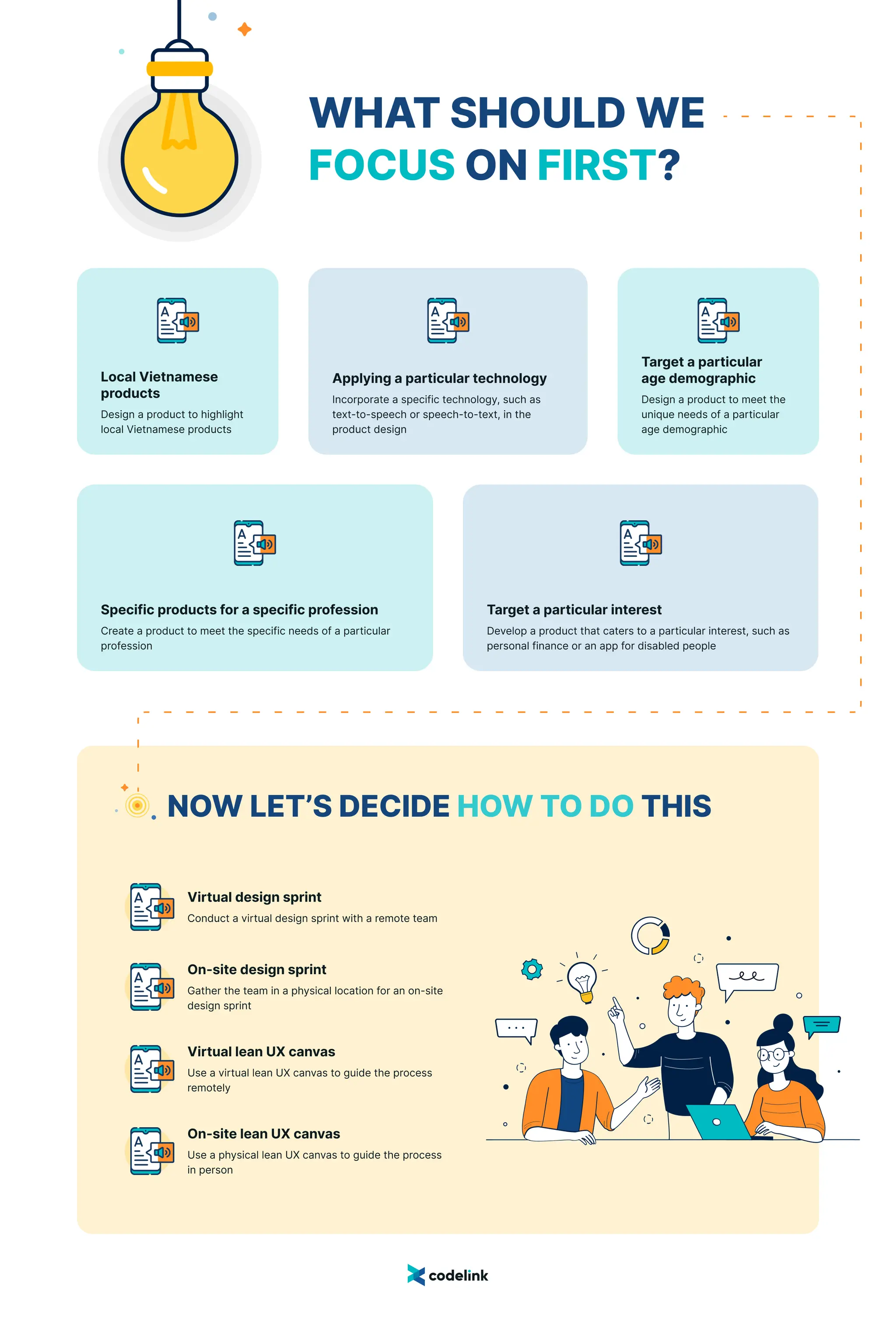
Team Structure
The ideal team for a design sprint includes individuals with diverse skill sets, including designers, engineers, marketers, and product managers. The team should be small enough to allow for efficient communication and decision-making but large enough to ensure a diversity of perspectives.
Let’s delve into the core structure of a design sprint team, aptly dubbed your "dream team". Each member of this team plays a unique and essential role, akin to pieces of a puzzle that complete the whole picture.
- The team is led by the Facilitator, akin to a host or moderator, who is responsible for setting the tone and managing the overall design sprint. Their role ensures that the environment is conducive to creativity and productivity, guiding the team through every step of the process.
- Working closely with the Facilitator is the Timekeeper. Just as a clock or timer keeps track of the passing seconds and minutes, the Timekeeper makes certain that the session adheres to its schedule. Their goal is to ensure each task is completed within the designated timeframe, maintaining efficiency and momentum throughout the sprint.
- Next in the lineup is the Bus Driver. No, they don't physically drive a bus, but they do keep the session on track. Their responsibility is to keep the team focused on the task at hand, steering the team towards the project's objectives and ensuring that no essential detail is overlooked.
- The Decider is the decision-maker of the team. When the path forward is unclear, it's the Decider who makes the ultimate decisions for the team to move forward. A backup or alternative Decider can be appointed if needed, ensuring that the team's progress is never hindered by indecision
- Finally, the Interviewer is the conduit between the team and the end users. They prepare and conduct user testing, finding and screening users, preparing user interview scripts, and hosting user testing or interview sessions. Their role is vital in collecting user feedback and insights, informing the team's work, and ensuring that the end product aligns with user needs and expectations.
Once your dream team is assembled, it's important to establish a Team Charter. This helps to ensure mutual respect among all team members and encourages a fun yet productive work environment. The specifics of the Team Charter will depend on your team's unique culture and values, but it is crucial that every member understands and aligns with it. Remember, a well-structured team is the first step toward a successful design sprint. Here is an example of what we found to be crucial.
Here is an example of what we found to be crucial our team understood, but you should evaluate this based on your own culture and values.
- This section encapsulates the guiding principles for a successful design sprint. These principles form the backbone of the team charter, which is instrumental in fostering a productive, respectful, and enjoyable work environment.
- The first principle is respect. Respect is not only about treating each other kindly; it extends to honoring the work process and schedule, as well as appreciating the complexity of the problem and the solutions under investigation. It's about creating an environment where everyone feels valued and heard, where different perspectives are encouraged and acknowledged.
- Secondly, bravery is essential in a design sprint. Think of it as channeling your inner superhero. It's about having the courage to ask questions, challenge views, and share any out-of-the-box ideas you may have. Remember, though, that this bravery should always be guided by the first principle of respect.
- Being studious forms the third principle. A design sprint is a fantastic opportunity to push the boundaries of your knowledge and skills, to learn and grow. It's about being curious and eager to learn, willing to delve into new areas and expand your understanding. It's about constantly striving to learn and improve, not just individually, but as a team.
- Lastly, but certainly not least, is the principle of fun. Work should not be a dreary obligation, but rather an activity that brings joy and fulfillment. A successful design sprint is one where the team not only accomplishes its goals but also enjoys the journey. It's about fostering a sense of camaraderie and shared achievement, and not forgetting to laugh and enjoy each other's company along the way.
Daily Schedule
Each day of the Design Sprint is structured with specific activities and goals. The first day is focused on mapping out the problem and sketching solutions. The second day is dedicated to making decisions and narrowing down potential solutions. The third day is when the team begins creating the prototype. The fourth day is when the team finalizes the prototype, and the fifth day is when the prototype is tested with real users.
This section aims to provide a comprehensive overview of an effective design sprint daily schedule, designed to help you stay on track and get things done in an efficient manner.
The day begins with a 5-minute warm-up at 9 am. Think of it as a quick stretching session for the mind, preparing everyone to dive into the day's work with focused attention and a readiness to engage in productive collaboration.
Once the team is warmed up, the next major event on the schedule is an interim sit-together session. This is a one-hour gathering held in the late morning or early afternoon, around 11 am or 2 pm. The session is a chance for the team to touch base, share updates, and collaborate on pressing tasks. It's an opportunity to clarify doubts, share insights, and build on each other's ideas.
After the sit-together session, team members engage in individual work. This self-work period spans the remainder of the day, allowing team members the flexibility and space to prepare for each upcoming meeting or session. It's a time for focused, independent work, where brainstorming, drafting, and refining ideas can occur.
As the day nears its end, the team comes together once more for a one-hour sync-up session at 4:30 pm. This wrap-up meeting is an opportunity to discuss the day's progress, identify any challenges or blockers, and plan for the coming day. It ensures that everyone is aligned and prepared for the next steps.
Lastly, it's important to mention the tools that can be employed throughout the day. Figjam board serves as a digital whiteboard, an ideal tool to draft and visualize ideas. For creating prototypes, you can use a simple pen and paper or opt for online mockup tools.
Once your prototype is designed and refined, use a tool like Figma to bring your prototype to life, turning your ideas into tangible, interactive designs. Each of these tools plays a crucial role in the design sprint process, helping to streamline workflows and enhance collaboration.
Goal-Setting
To ensure the team is aligned and working towards a common goal, it's important to create a Team Charter. This outlines the team's goals, values, and expectations for the design sprint.
In addition to the goals set out in the Team Charter, it's important to have both long and short-term goals for the project. This allows the team to stay focused on the big picture while also ensuring they are making progress toward the end goal.
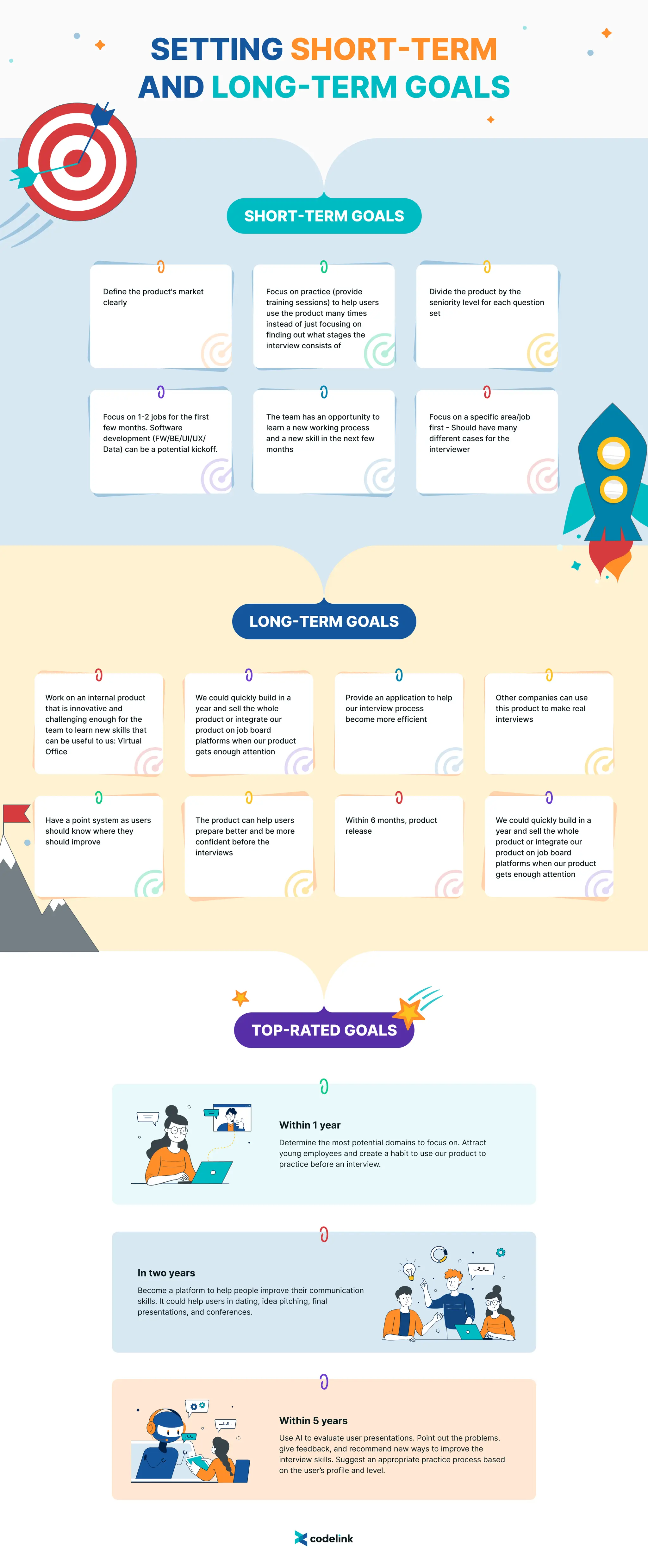
Challenges and Opportunities
Identifying potential roadblocks and challenges is essential to ensuring a successful design sprint. These challenges could include technical limitations, limited resources, or conflicting team goals. However, it's important to reframe these challenges as opportunities. By doing so, the team can find creative solutions to overcome these challenges and ultimately create a better product.
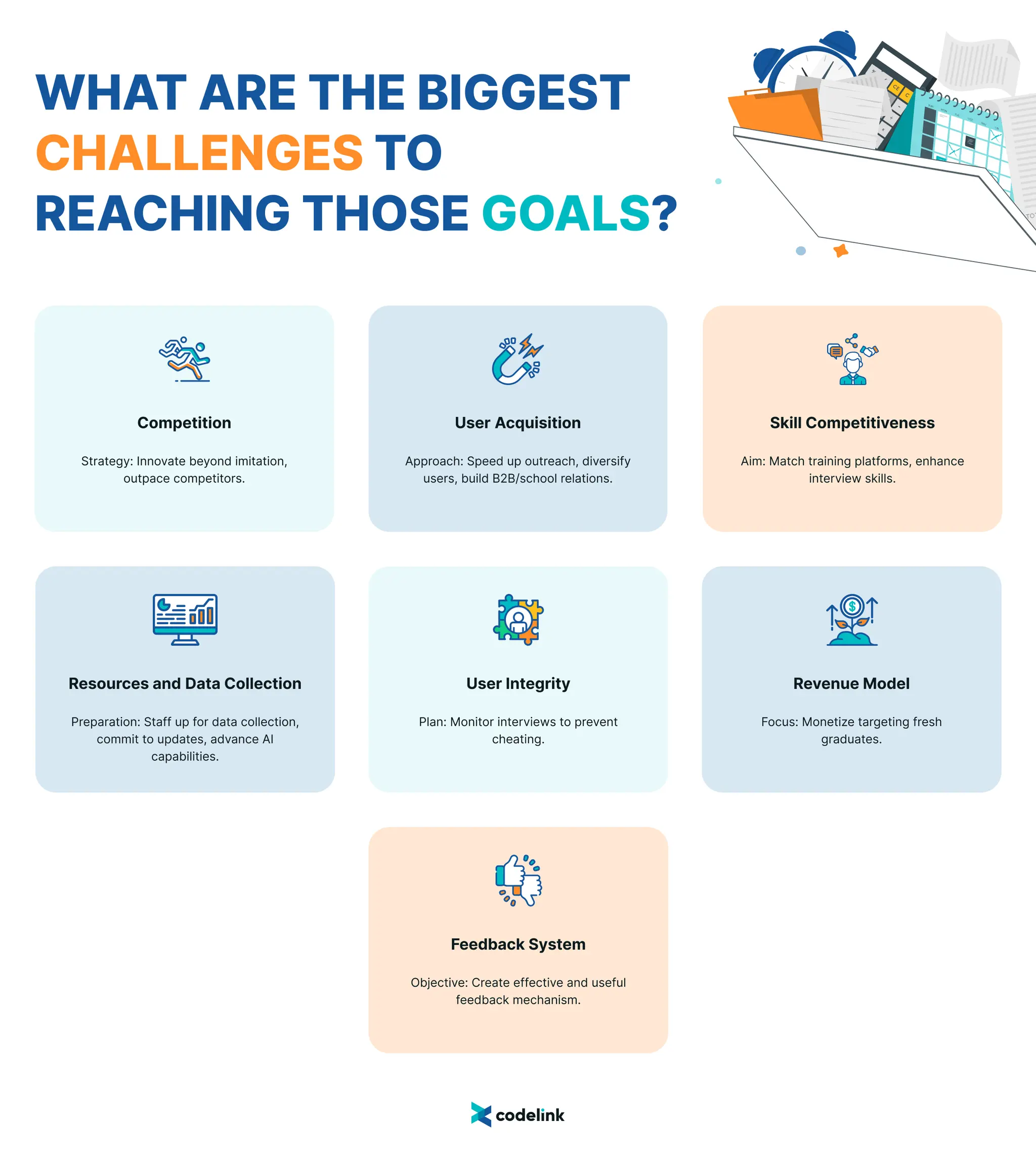
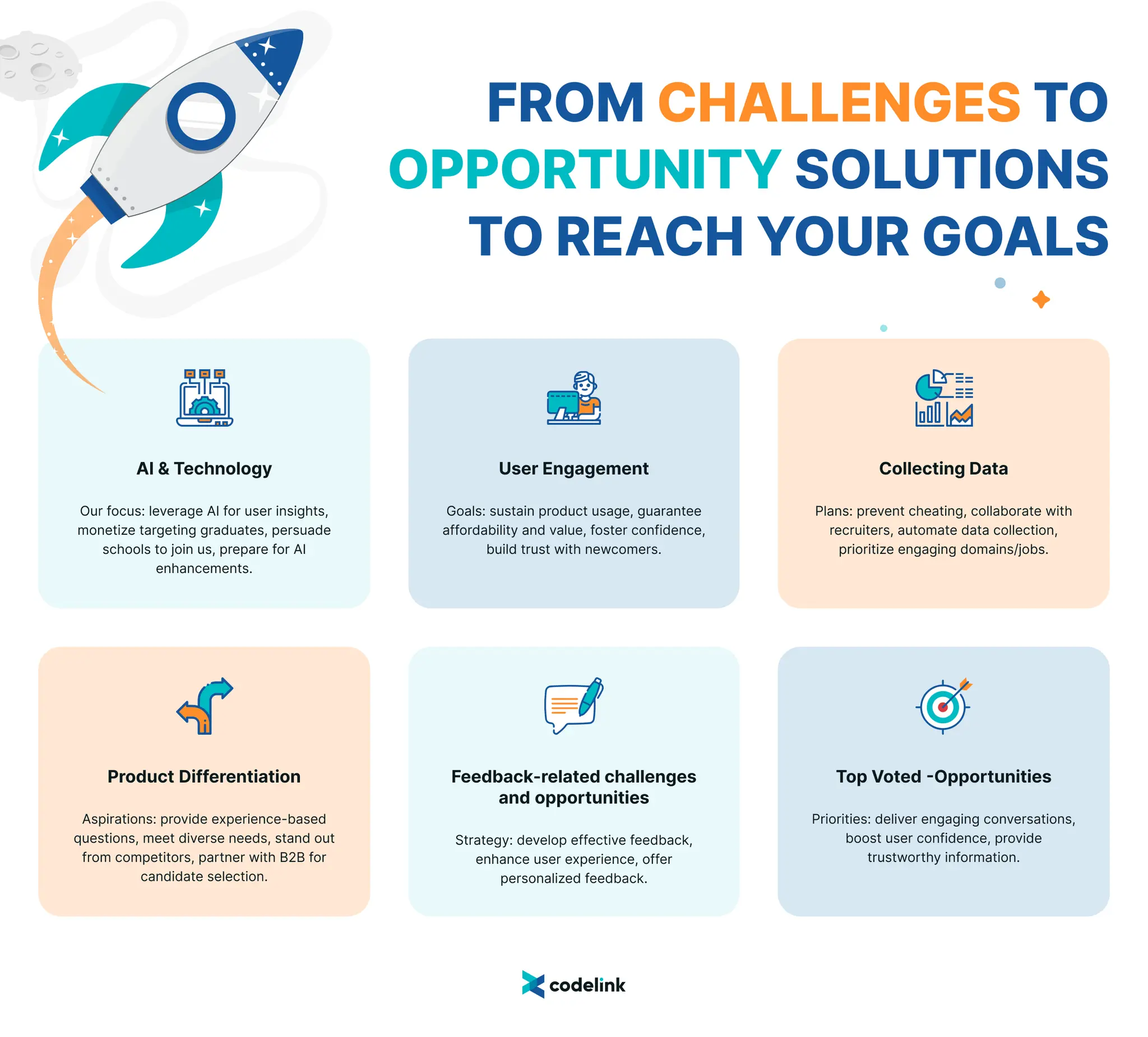
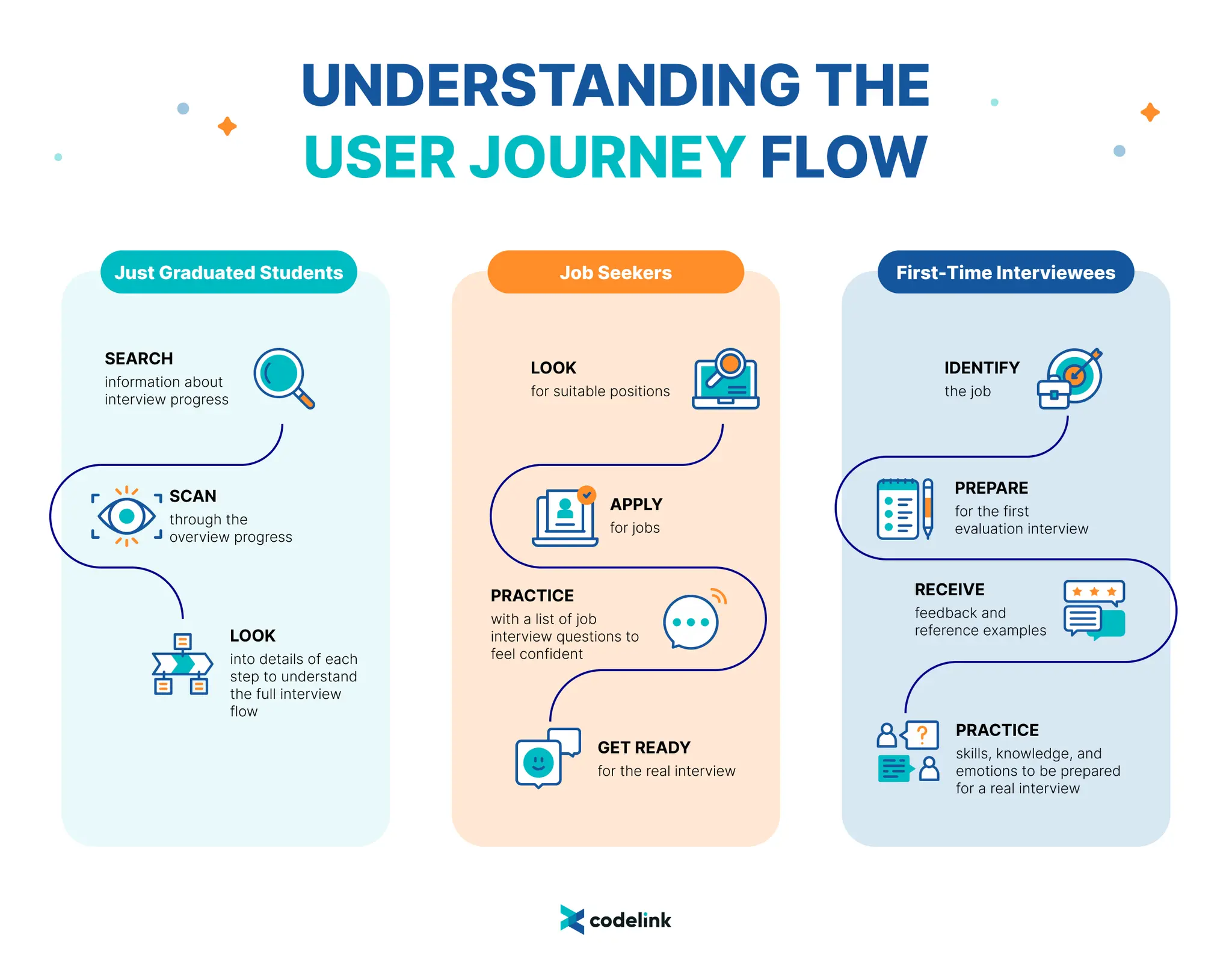
Pulling the Design Sprint Together
Collaborating with your team to identify the most relevant steps and merge your ideas into one map is a great way to ensure you're on the right track. This approach can help you see the big picture and create a roadmap that will allow you to achieve your goals more efficiently.
The key to an efficient design sprint is not only a well-structured plan but also a dedicated team ready to take an idea from zero to a fully realized prototype. An integral part of this journey is the interview process.
The journey begins with the selection of a suitable job position or level. Consider this as setting your compass for the journey, providing the direction you will take during the sprint. Imagine flipping through a job listing or navigating the intricacies of a job application process. It's this critical first step that lays the foundation for the subsequent stages of the interview process.
Once your destination is set, the next stage is preparation. This is where you'll practice a diverse array of questions, mentally equipping yourself for the journey ahead. Picture an individual deep in contemplation, rehearsing potential interview questions. This step is like packing your bags for a journey, ensuring that you're well-prepared for any surprises that may crop up.
The final leg of this journey is feedback. It's a reflective phase where you absorb and learn from the insights garnered during the process. Picture someone attentively receiving feedback or deeply engaged in a sample interview video. This stage is like returning from a journey, where you understand what worked, what didn't, and how you can improve for the next trip. It involves identifying your strengths and weaknesses, learning from reference examples, and implementing practical tips to enhance your approach.
Lightning Demos
When it comes to design sprints, inspiration can come from many sources. One of the best ways to spark creativity is to look at what other companies have done and learn from their successes. This is where lightning demos come in handy. Lightning demos are a quick and effective way to explore various solutions that other companies have implemented, analyze them, and extract ideas that can be useful for your own project.
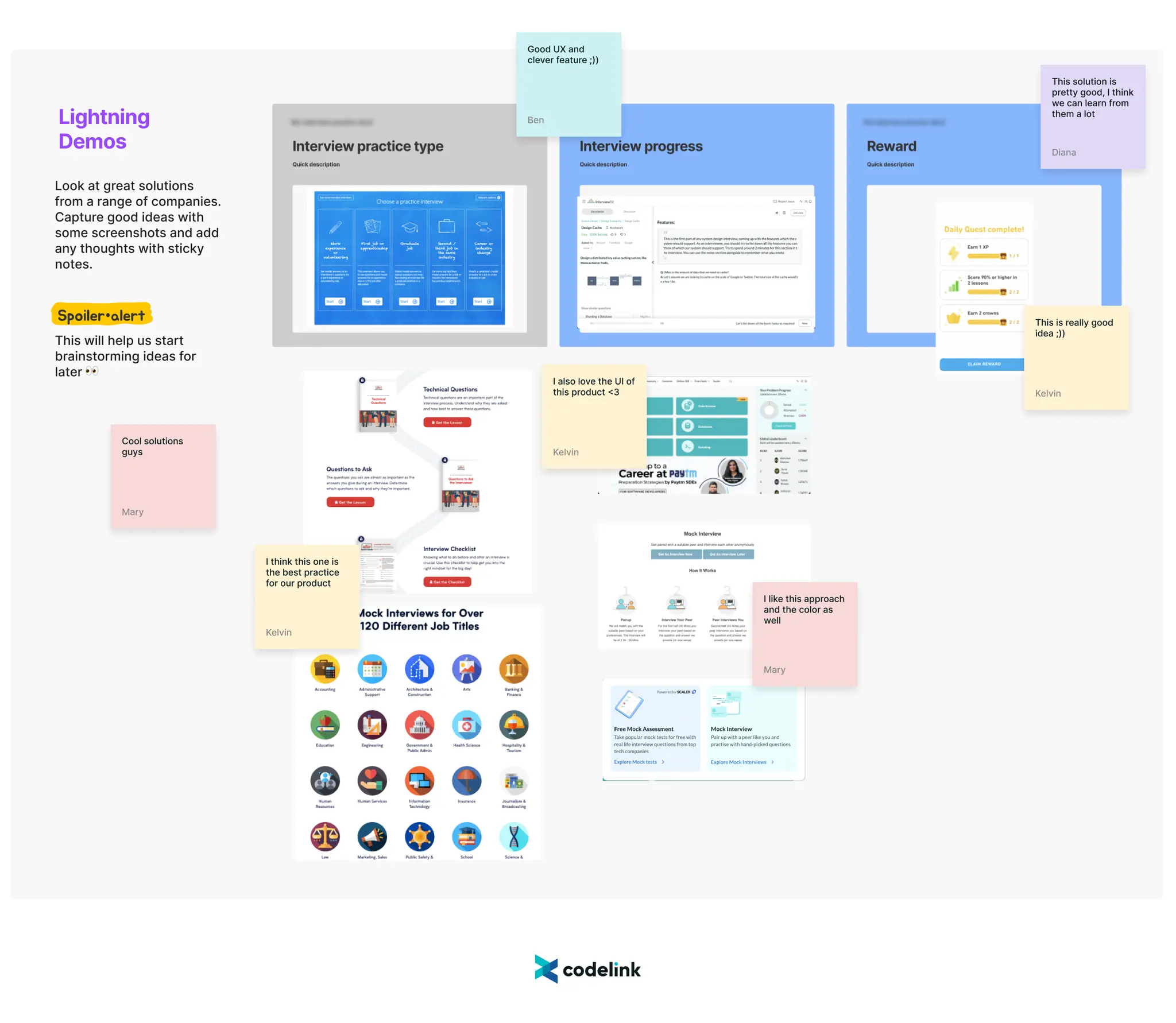
Sketching Rough Ideas for Solutions
Now that the team has completed the lightning demos, it's time to move on to the next step in the design sprint process - sketching rough ideas for solutions. This is where the team can let their creativity flow and come up with a wide range of ideas for how the product could look and function. By sketching out ideas on paper or digitally, the team can explore different possibilities and generate a variety of options to choose from.
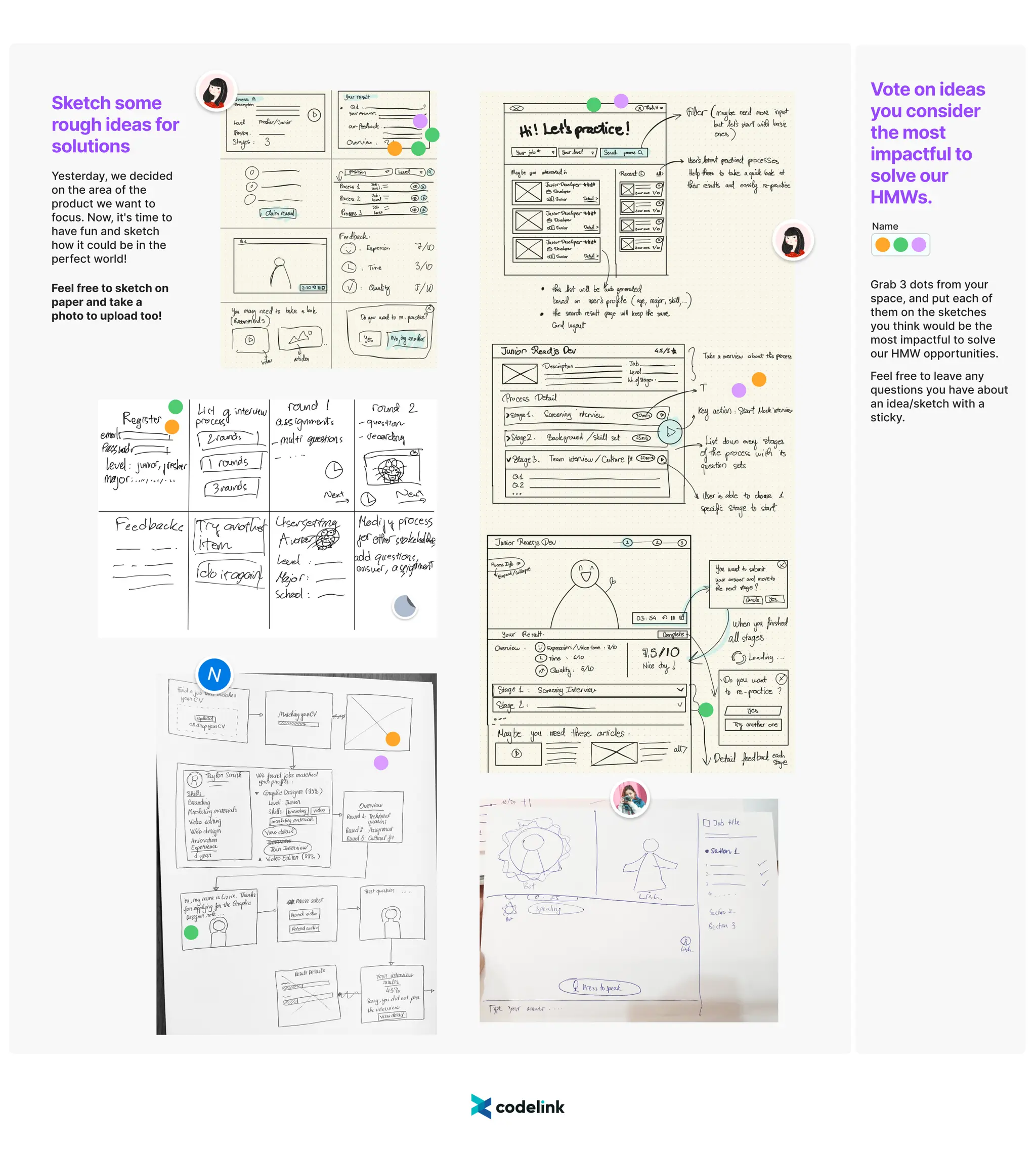
Building the Prototype
With the rough ideas for solutions sketched out, the team moved on to the exciting phase of creating a working prototype. But before we could dive into user testing, we needed a prototype that would allow us to showcase our design and ideas to stakeholders and potential users. This step is crucial in the design process, as it allows the team to see the design in action, identify potential flaws, and adjust it accordingly.
Example link to the prototype:
- EN: https://www.figma.com/proto/cFLLByn7lemtsiXoRwAtDg/Interview-Buddy-Lo-fi-Wireframe?page-id=3388%3A5982&node-id=3388%3A6004&starting-point-node-id=3388%3A6004&scaling=scale-down-width
- VN: https://www.figma.com/proto/cFLLByn7lemtsiXoRwAtDg/Interview-Buddy-Lo-fi-Wireframe?page-id=3425%3A16272&node-id=3425-16273&starting-point-node-id=3425%3A16273&scaling=scale-down-width
Insights from User Testing
At the end of the design sprint, a working prototype is created. The prototype is tested by actual users and the feedback is then examined from positive and negative angles. The insights are valuable as they provide action items to help improve the product. The user feedback is captured on stickies and organized into three categories: positive product insights, negative product insights, and other insights.
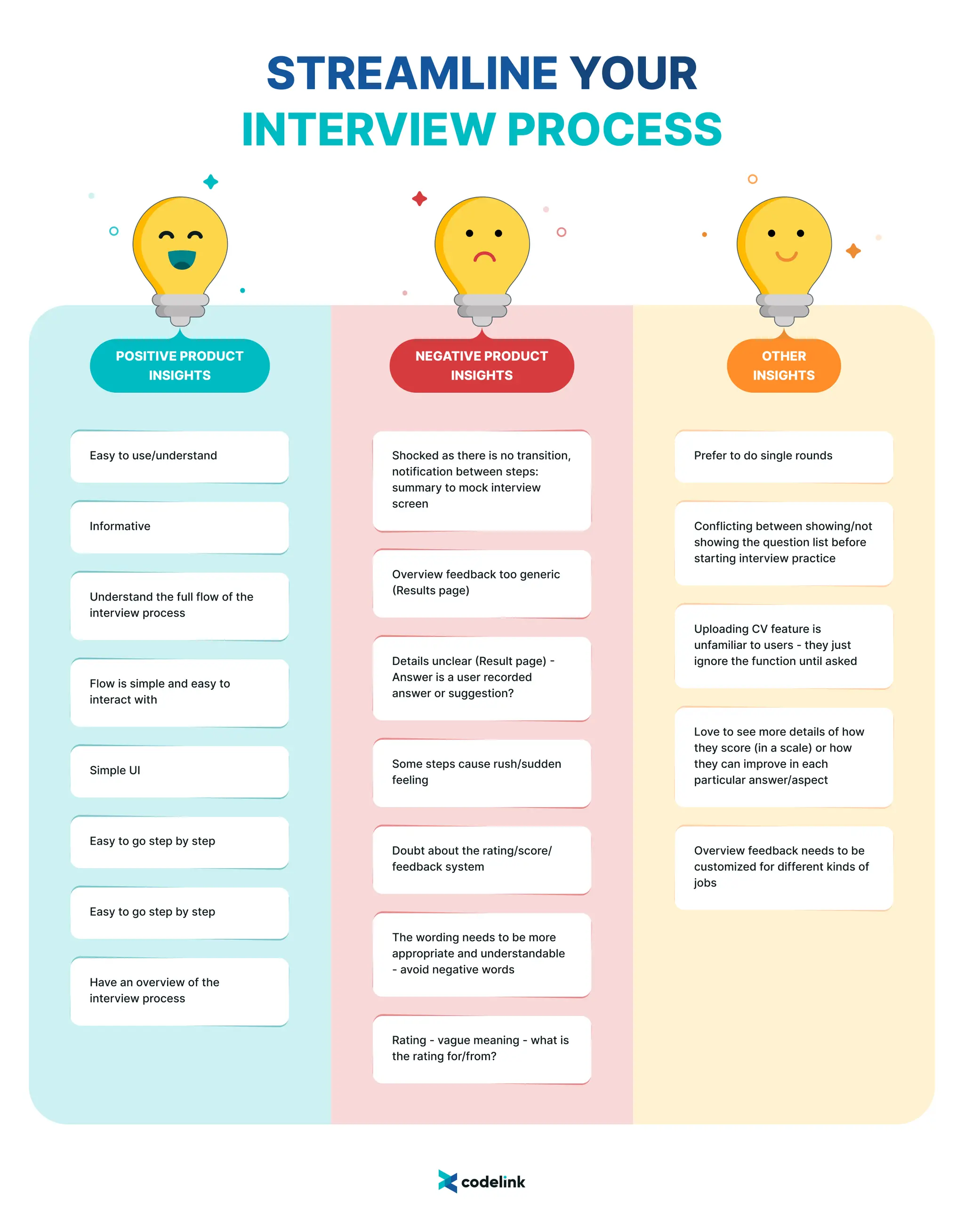
Are You Ready to Begin Your Own Design Sprint?
Thanks to the async design sprint process, CodeLink were able to take our idea from zero to a fully functional prototype in just a few weeks. It was a collaborative effort that required us to be flexible, creative, and willing to pivot when necessary. Through the process, we were able to identify challenges and turn them into opportunities for growth and improvement.
If you're looking to take your product idea to the next level, we highly recommend the async design sprint process. It's an efficient and effective way to move from ideation to a fully functional prototype in a short amount of time. Give it a try and see what amazing things you can create!
To see the finished product, we invite you to check out Tanoto and explore how you can gain confidence before going into that all-important interview. Start practicing your interview skills today and take the first step toward landing your dream job!
